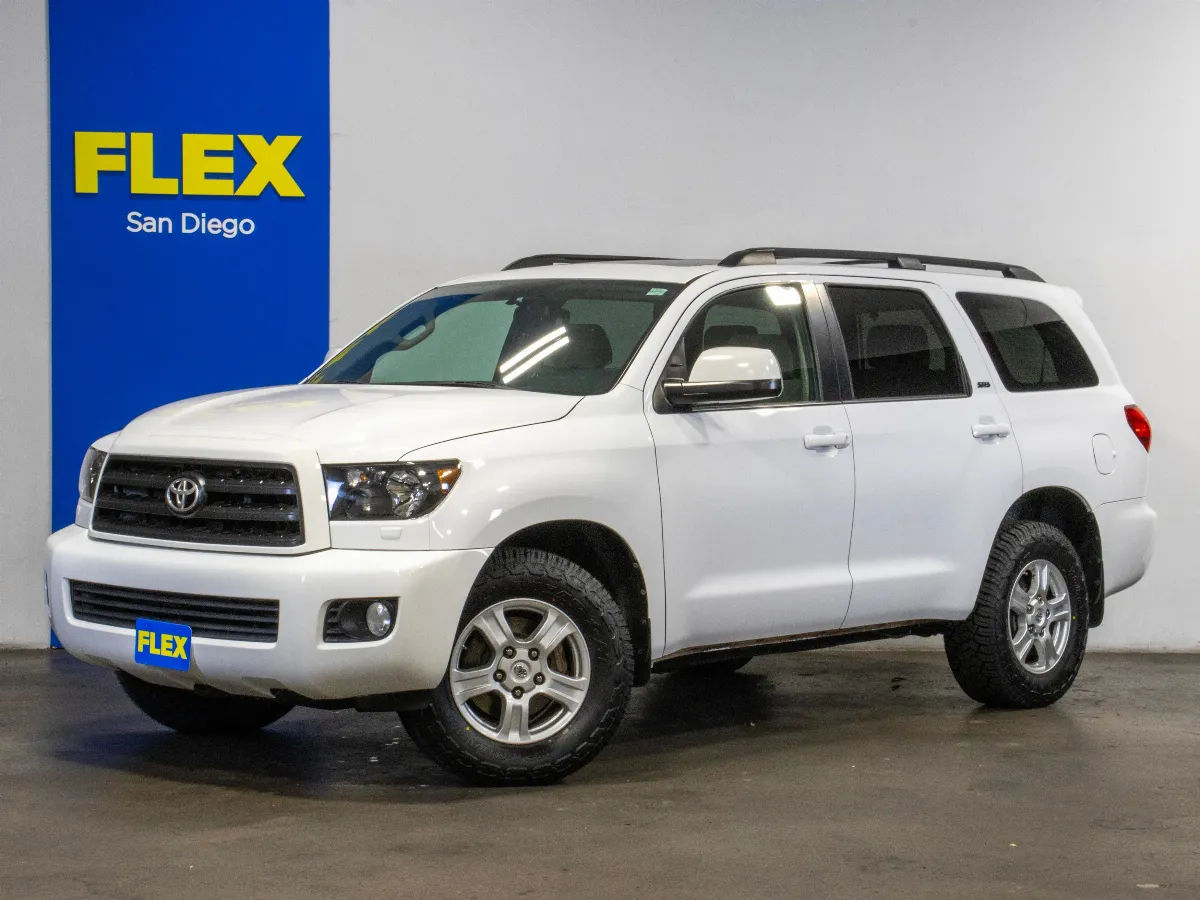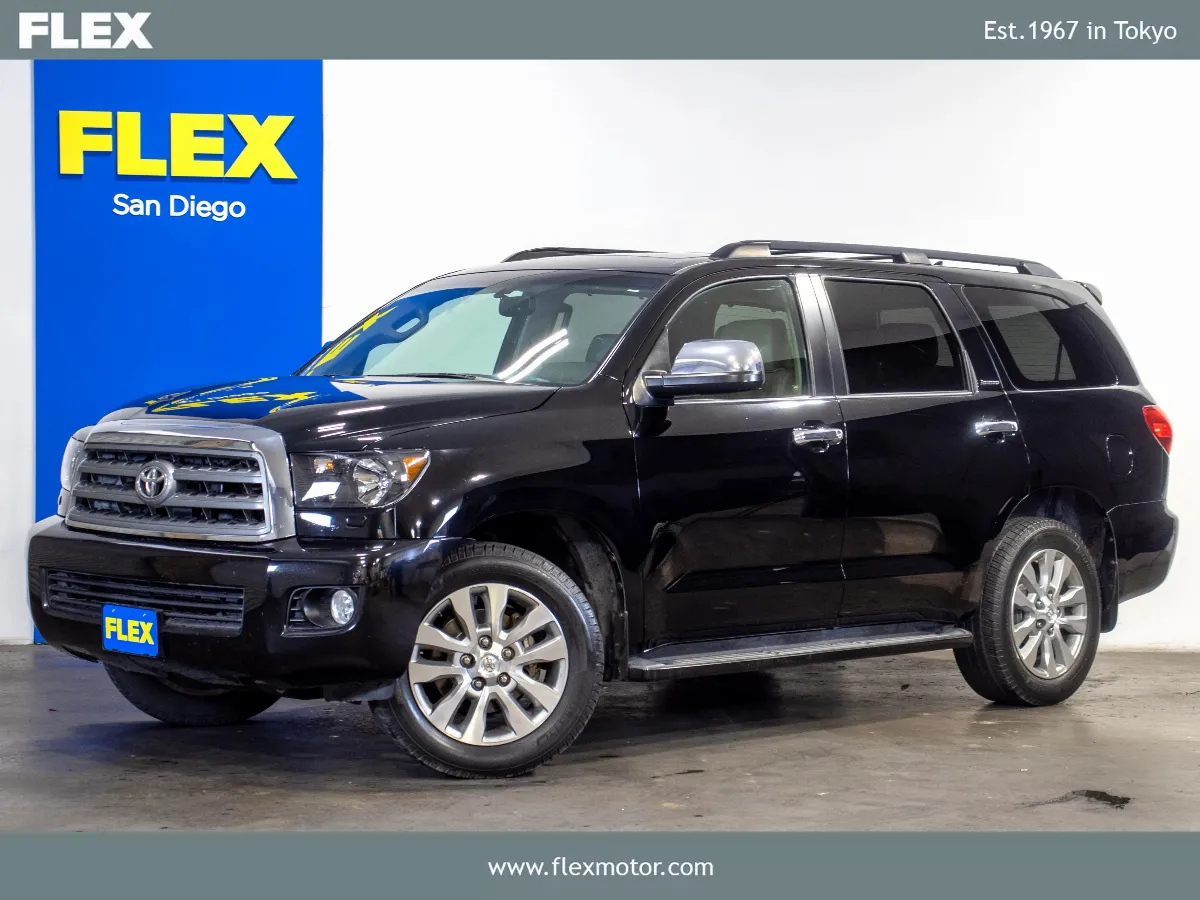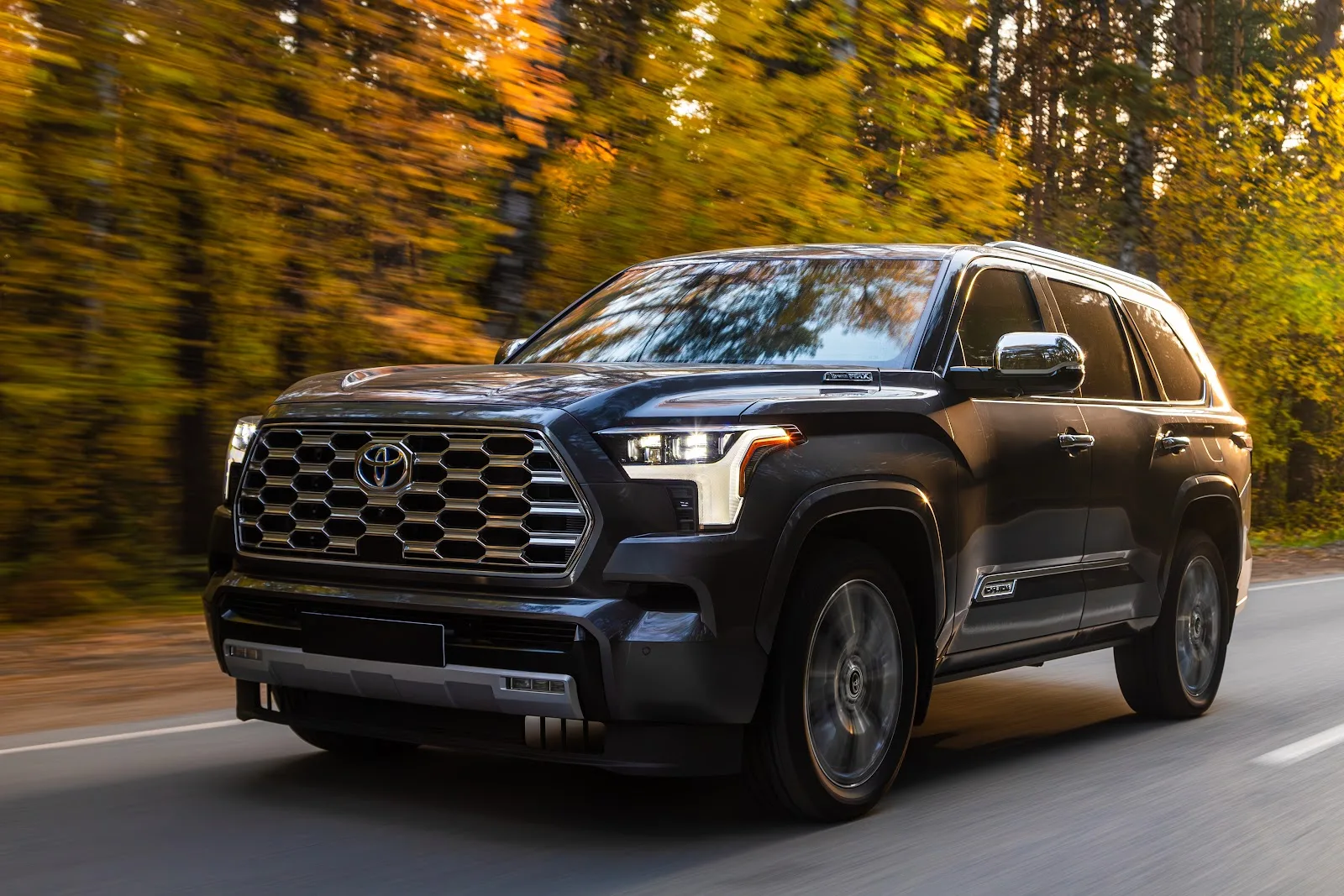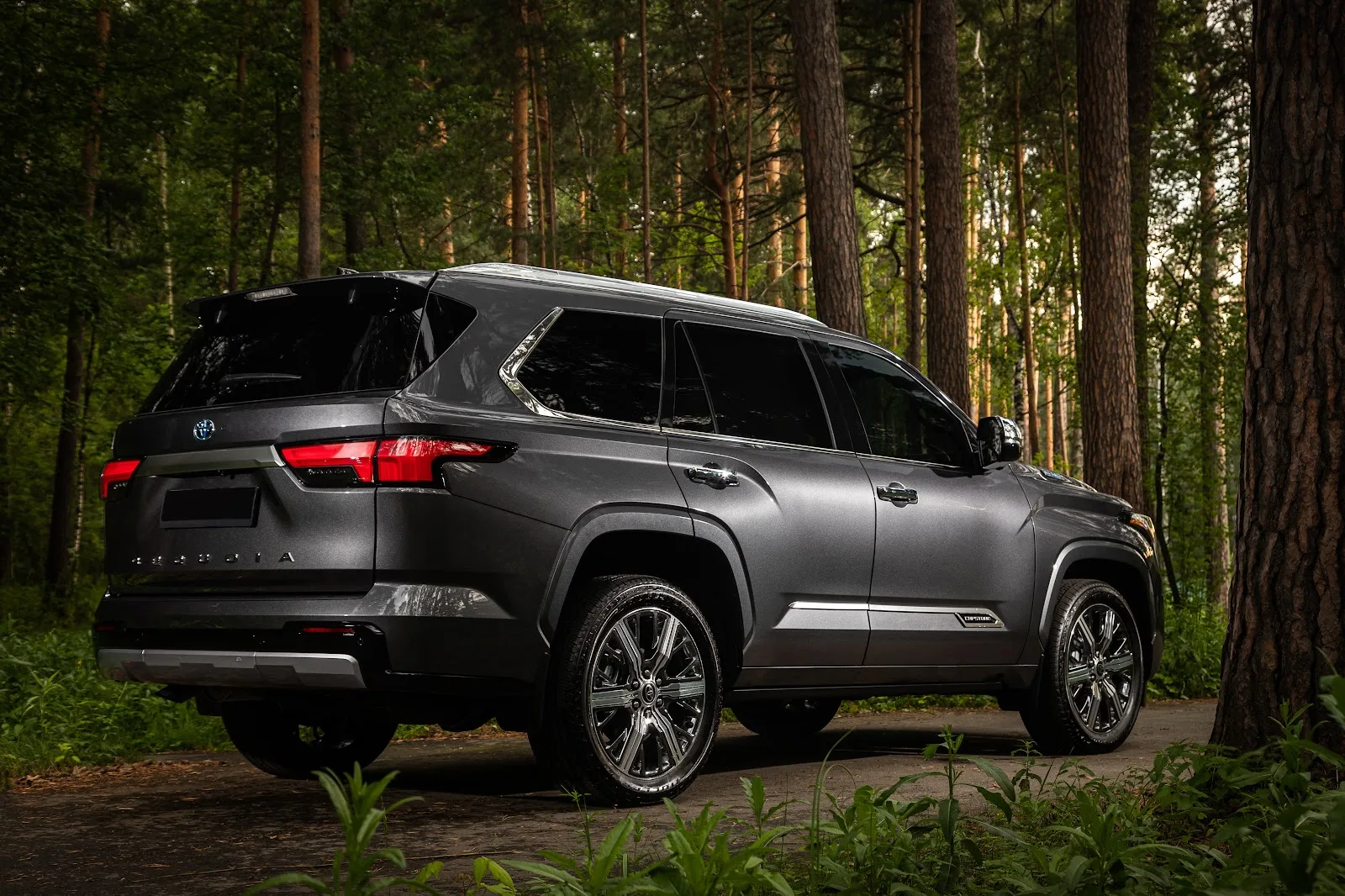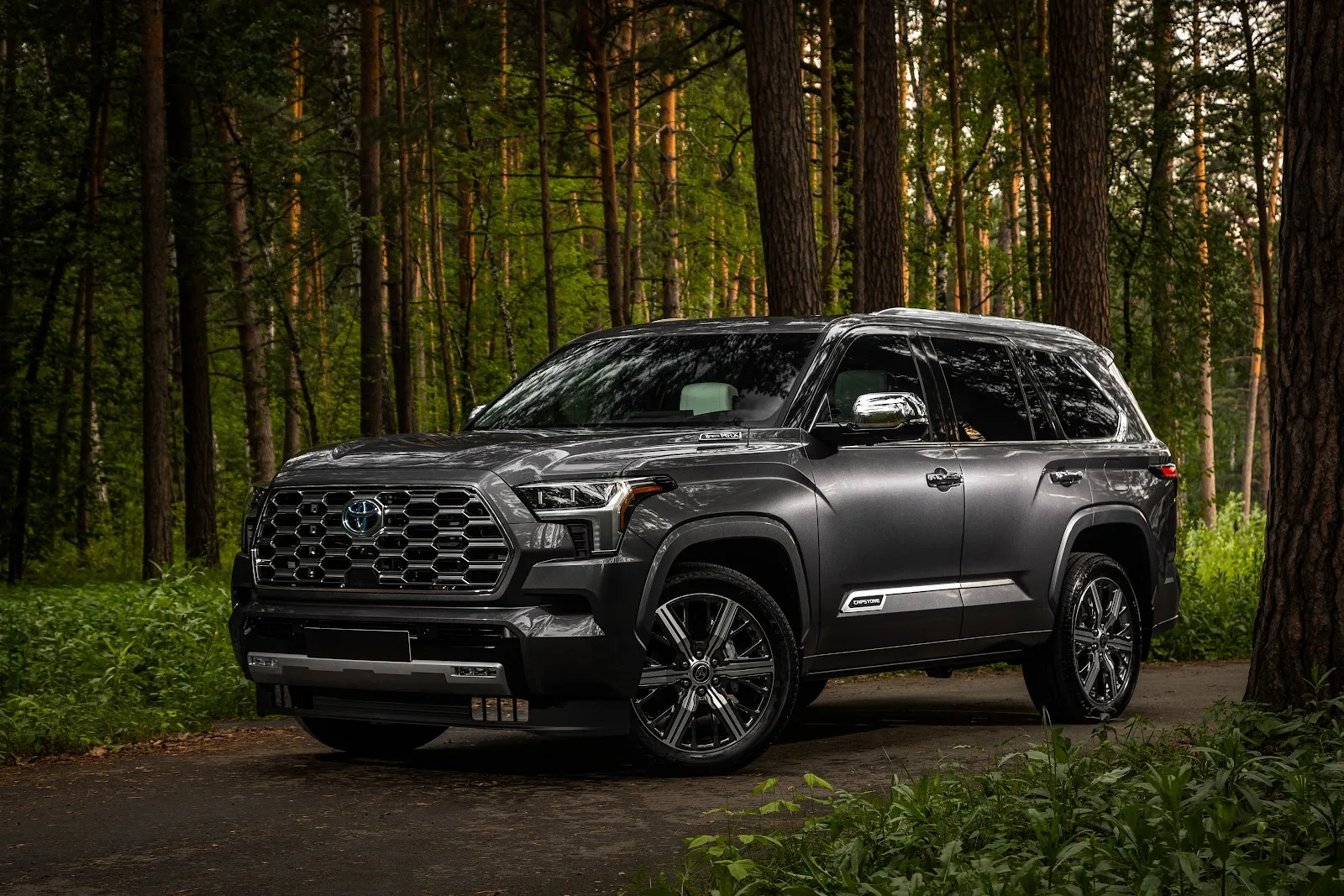If you’re shopping for a used Toyota Sequoia, congrats – you’re already looking in the right direction. Whether you’re hauling kids to soccer practice or dragging your boat to the lake, the Sequoia delivers that full-size SUV punch with Toyota’s trademark durability. However, not all model years are manufactured equally. Some are rock-solid legends. Others? Let’s just say you’ll want to steer clear.
This guide breaks down everything you need to know about buying a used Sequoia – from best years to avoid, towing specs, gas mileage, and real-world reliability.
Table of Contents
- Used Toyota Sequoia Buying Guide: Best Years, Prices, and What to Watch For
- Why the Used Toyota Sequoia Is Still a Top Pick for Families and Adventurers
- What’s the Best Model-Year Used Toyota Sequoia?
- Toyota Sequoia Generations Compared: 2001 to Present
- Years to Avoid When Buying a Used Toyota Sequoia: Problematic Model Years and Known Issues
- Is the Used Toyota Sequoia Reliable?: Longevity, Maintenance, and Real-World Owner Experience
- Towing and Seating Capacity by Generation: How Much Can a Used Sequoia Tow, and How Many People Can It Fit?
- Fuel Economy of Used Toyota Sequoias: MPG Ratings by Year and Drivetrain Type
- Choosing the Right Used Toyota Sequoia for Your Needs
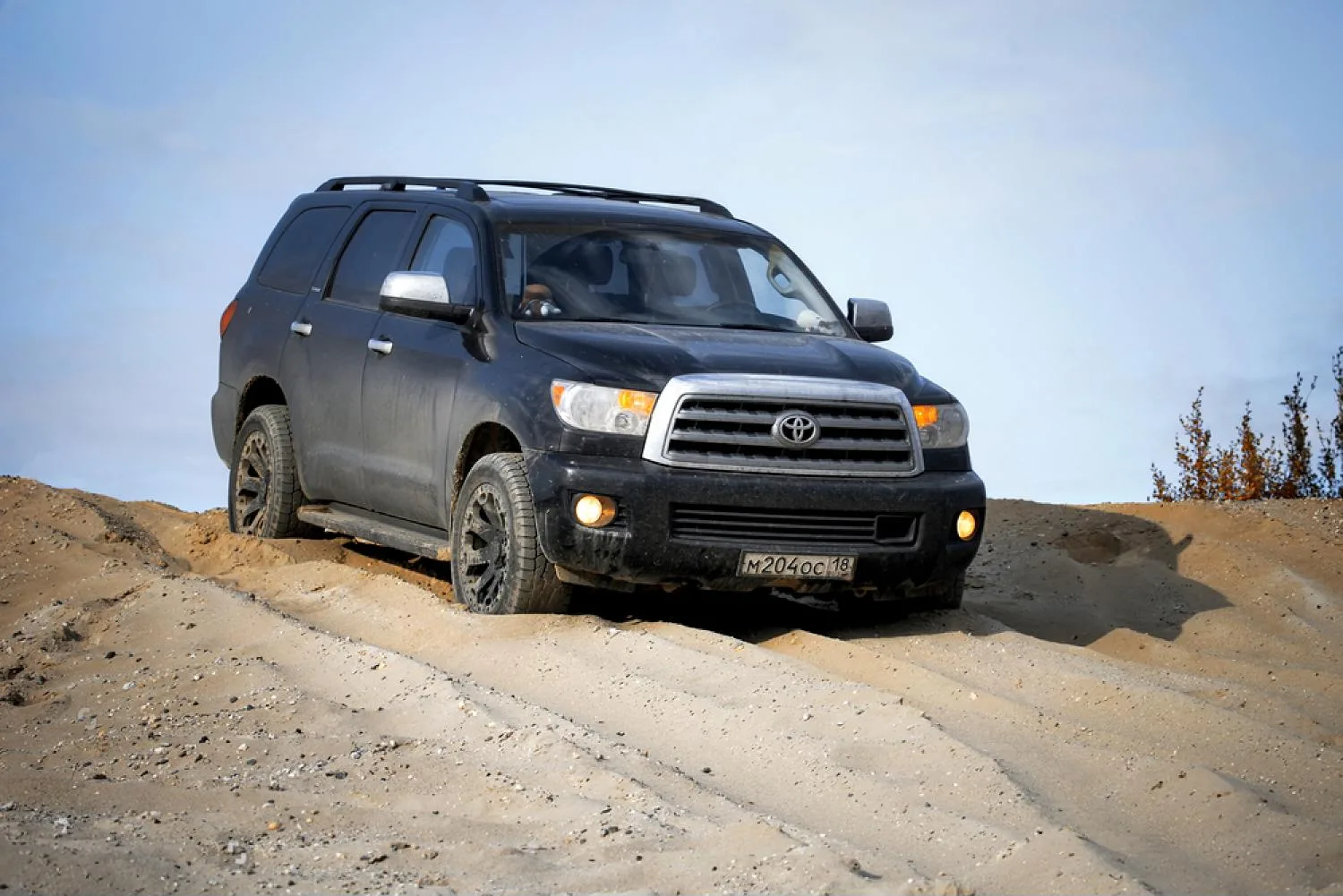
Why the Used Toyota Sequoia Is Still a Top Pick for Families and Adventurers
Vacations are that much better when the world is yours to explore, and the Sequoia makes adventure available. From comfy rides over long stretches of highways to off-roading to your favorite camping destination, don’t underestimate the Sequoia’s capabilities.
Legendary durability and serious space make the Sequoia an SUV to consider. The Sequoia’s claim to fame is simple: it’s a full-size, body-on-frame SUV that takes a beating and keeps right on rolling. Built on the Tundra truck platform, it’s made to last – think 200,000 to 300,000 miles or more with basic maintenance. You also get third-row seating (roomy enough for adults in most trims), up to 9,520 pounds of towing capacity in newer models, and a cabin that feels just as comfortable off-road as it does on the highway. Check out our detailed guide on Toyota Sequoia’s Towing Capacity (All Generations Covered).
Who this guide is for: families, off-roaders, and value-conscious SUV buyers
We put this guide together for anyone seeking adventure, anyone looking for a luxury SUV, and families with lots of kids, cargo, and pets.
Who should be looking at the Sequoia?
- Big families who need real third-row space – not just an afterthought
- Outdoor lovers with trailers, boats, or off-road dreams
- Value hunters who want a rugged SUV with top-tier reliability and resale
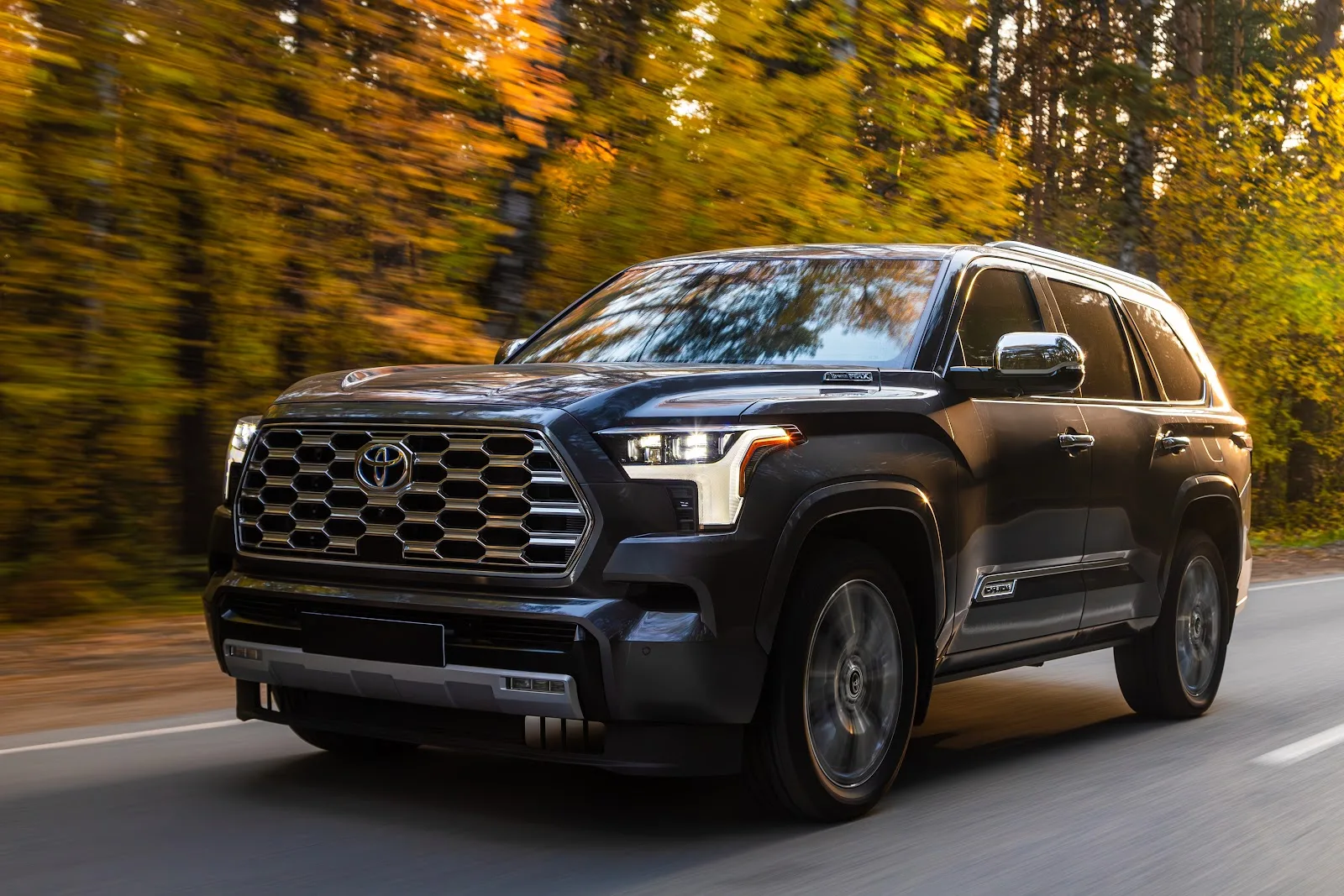
What’s the Best Model-Year Used Toyota Sequoia?
The first few years between generations 1 and 2 had some hiccups that are best avoided, but the remaining years are all proven reliable. Don’t overlook 2014 for strong performance and few issues. J.D. Power gave it a 3.5 out of 5 reliability score, with consumers reporting few problems other than a glitch in the folding mechanism in the folding mirrors and not-so-great fuel economy.
Summary of the best years to buy used Sequoia
The post 2013 and early 2010 models still pack the bulletproof 5.7L V8 and often cost much less than other years. Just make sure to check for rust and high-mileage wear.
Why 2018 and newer models are recommended for safety and tech
That’s when Toyota added Toyota Safety Sense P (TSS-P), which includes features like adaptive cruise control and lane departure warning. It’s also the first year with LED headlights and better infotainment across all trims.
| Model Year | Why It’s a Good Pick | Watch Out for These |
|---|---|---|
| 2023–2025 | All new Gen 3, hybrid powertrain with modern tech | Smaller cabin than Gen 2 |
| 2018–2022 | TSS-P Safety Suite, CarPlay (2020+) | V8 is thirsty |
| 2014–2017 | Updated tech, standard 5.7L V8 | No modern safety tech |
| 2010–2013 | Budget-friendly, strong powertrain | Basic infotainment, dated cabin |
| 2008–2009 | Big size, truck-like feel | Higher risk of repairs |
| 2001–2007 | Cheap and capable | Frame rust, minimal tech |
Toyota Sequoia Generations Compared: 2001 to Present
Launched in 2001, there have only been three generations of Sequoias. But don’t let that low number fool you – there have been plenty of changes under the hood and behind the scenes during its short lifespan. All changes have been good.
First Generation (2001–2007)
Introduced in 2000 for the 2001 year, the Tundra-inspired Sequoia rolled off the production line in Indiana with its sights set on the full-sized North American SUV market. Move over, Tahoe, Expedition, and Yukon.
V8 performance and seating capacity
The first model was equipped with the 240 horsepower 4.7L V8. The engine got a bit of a horsepower bump in 2005 when the Sequoia got its first makeover. Here is our detailed guide on Sequoia’s cargo space and seating capacity.
The 4.7L V8 is slightly smaller than its competition, but it was still quick on the takeoff. The 2005 upgrade included Variable Valve Timing with Intelligence (VVT-i) and Electronic Throttle Control with Intelligence (ETCS-i), which bumped the horsepower to 280 and torque from 315 lb.-ft. to 328 lb.-ft. A 5-speed automatic transmission replaced the old 4-speed automatic.
Known issues (frame rust, mechanical wear)
When buying a used Toyota, mileage is only relevant to the care the vehicle has had. This is true across all of the models, but particularly with the trucks and SUVs.
There are a few known issues like the following:
- Air Injection Pump – can fail, but this issue can be resolved with a replacement or a bypass before the 100,000-mile mark.
- Exhaust Manifold – can crack, causing leaks
- O2 Sensors – may fail, but most vehicles have this issue after a lot of miles. Replacement is easy.
- Lower Ball Joints – subject to recall
- 2005 + Transmission – considered strong, but change the fluid if you do a lot of towing
- Engine – piston slap can be heard on cold starts in the high mileage older engines
- Rear Spring Mounts – collects dirt that causes rust, making it hard to change the struts
Quality control wasn’t always the best in the initial models; rust on the frame, especially in salty climates, is a bane to all cars.
Other issues:
- The Rear Hatch Handle needs frequent replacement
- Loud Vacuum Cleaner noises during cold starts are due to the secondary air pump. You may need to replace it.
Towing specs and tech limitations
The first generation was made for rugged driving with a towing capacity of 6,500 pounds on the 2WD model and 7,400 pounds with the 5.7L V8 SR5 2WD trim package.
Toyota has focused all of its tech energy on safety equipment, so don’t expect a lot when it comes to entertainment and towing packages.
This generation was available in two trim levels: SR5 and Limited
Second Generation (2008–2022)
The second generation is once again based on the Tundra and now has a fully boxed frame, a rear independent suspension with double wishbones and coil springs, and a center locking differential.
Independent rear suspension and more interior room
The new suspension helped improve the ride by adding comfort. It improved the turning radius to 19 feet, and the rear seat folds flat for more cargo room. In addition to the power-folding third-row seats, the higher floor has increased the third-row passenger area, but at the expense of a bit of cargo space.
Toyota says the new frame is 30% more torsionally rigid, making it less subject to flex. It’s about 500 pounds heavier than the first generation.
Best years: post-2018 with Toyota Safety Sense
As we’ve mentioned, the post-2018 models with TSS are the most up-to-date when it comes to modern safety equipment, such as Lane Departure Alerts and Adaptive Cruise Control, but there are many other safety features included:
- Pre-Collision System with Pedestrian Detection
- Full-Stop Technology
- Automatic High Beams
- Blind Spot Monitor
- Rear Cross Traffic Alert
Model-year updates and feature growth
2008: All-New Second-Generation Sequoia Debuts
Toyota introduced the second generation in 2008 with a new suspension that improved the ride and the turning radius. There were three trim levels: SR5, Limited, and the new Platinum editions powered by the 276 horsepower 2UZ-FE 4.7L VVT-I V8.
2010: New 4.6L V8 Engine and Styling Updates
In 2010, Toyota dropped the 4.6L 1UR-FE V8 under the hood, where it remained until 2012.
2013: 5.7L V8 Becomes Standard Across the Lineup
A ULEV-II compliant 3UR-FE 5.7L 381 horsepower V8 pushed the 6-speed automatic to greater speeds. This motor was optional in some of the 208-2009 models and under the hood of the 2008-2022 models.
2014: Entune Infotainment System Added
Since the beginning of the second generation, the Sequoia has had more “luxury” equipment like power windows, power locks, and a keyless entry than previous years, but in 2014, Toyota added the Entune Infotainment System to the new models.
Toyota’s Entune is an infotainment suite offering Bluetooth-connected features such as hands-free calling, music streaming, and app access through the vehicle’s touchscreen.
Key Features:
- Entune Audio: Basic Bluetooth connectivity, Siri Eyes-Free (iPhone), and phonebook access.
- Entune App Suite: In-dashboard apps including Pandora, iHeart Radio, Slacker, and Yelp.
- Entune 3.0: Latest version with Apple CarPlay, 4G LTE Wi-Fi, dynamic navigation, and remote capabilities.
- Remote Connect: Remote vehicle control includes locking/unlocking doors, engine start, and diagnostics checks.
- Service Connect: Provides vehicle health reports, maintenance alerts, and service scheduling.
This system was included in the 2012 SR5 as standard, but an upgraded system with navigation was optional on the Limited and standard on the Platinum.
By 2014, the Entune was offered with an optional Blu-ray DVD player on the Limited and standard on the Platinum.
2016: More Tech for Limited Trim
The Limited trim was equipped with more technology by 2016 that included a power liftgate, power folding mirrors, and a power passenger seat. It also received leather heated front seats, a power-folding third-row seat, and Opitron instrumentation and 7-inch screen. Opitron instruments are designed for greater clarity and reduced eye fatigue. It uses LED lights and everything is ergonomically placed.
2018: Major Safety and Lighting Upgrade
2018 saw greater safety with the introduction of standard LED headlights, daytime running lights, and fog lights. The all new lighting was designed for better visibility.
2020: Apple CarPlay and Android Auto Now Standard
In 2020, Toyota added Apple CarPlay and Android Auto as standard equipment for the tech-savvy drivers who wanted connectivity with all of their devices.
2021: Nightshade Special Edition Introduced
The Nightshade Special Edition was introduced in 2021 based on the Limited edition and limited to 2,500 units. It featured a blackout trim, dark chrome grille, black mirror caps, black door handles, and 20-inch black wheels. It also had black leather-trimmed seating. The overall appearance of the Nightshade is dramatic, as well as aggressive. MSRP was around $60,000 in 2021.
2022: Premium Paint Options across the Lineup
Premium paint options in 2022 included:
- Celestial Silver Metallic
- Magnetic Gray Metallic
- Midnight Black Metallic
- Shoreline Blue Pearl
- Wind Chill Pearl
- Lunar Rock
The 2022 TRD Pro Sequoia is the only model available in Solar Octane: a vibrant orange color different than the other TRD Pro colors in other models. The 2022 year had a bit of a tropical bent to it when it came to the special TRD Pro colors.
Third Generation (2023–Present)
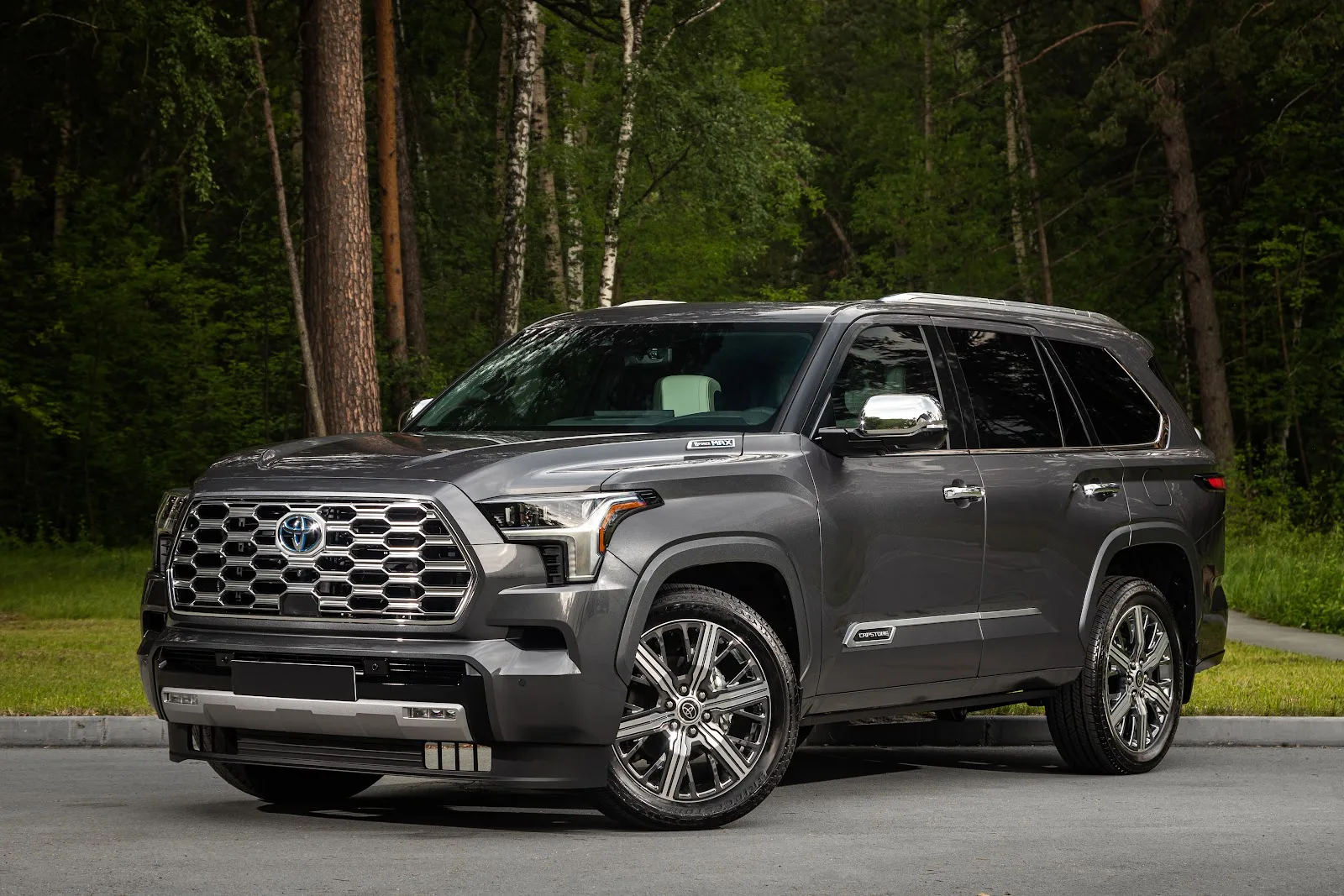
The biggest change yet: goodbye V8, hello, hybrid turbo V6. Toyota dropped the i-FORCE MAX 3.4L twin-turbo V6 hybrid under the Sequoia hood, the same one found in the new Tundra. This new setup creates 437 hp and 583 lb-ft of torque, while improving fuel economy.
Hybrid turbo V6 powertrain and 9,520-lb towing
For anyone skeptical about the towing capabilities of the hybrid turbo V6, rest-assured, there is no shortage of towing power in the 2023 third generation Sequoia. Over 9,000 pounds of towing capability is nothing to sneer at. You can tow small travel trailers, popup campers, small boats, and your horse trailer with the horses included. That’s enough towing ability to get lost in the wilderness for a long time. Don’t forget, the Sequoia is equipped with Toyota’s legendary off-road abilities, too.
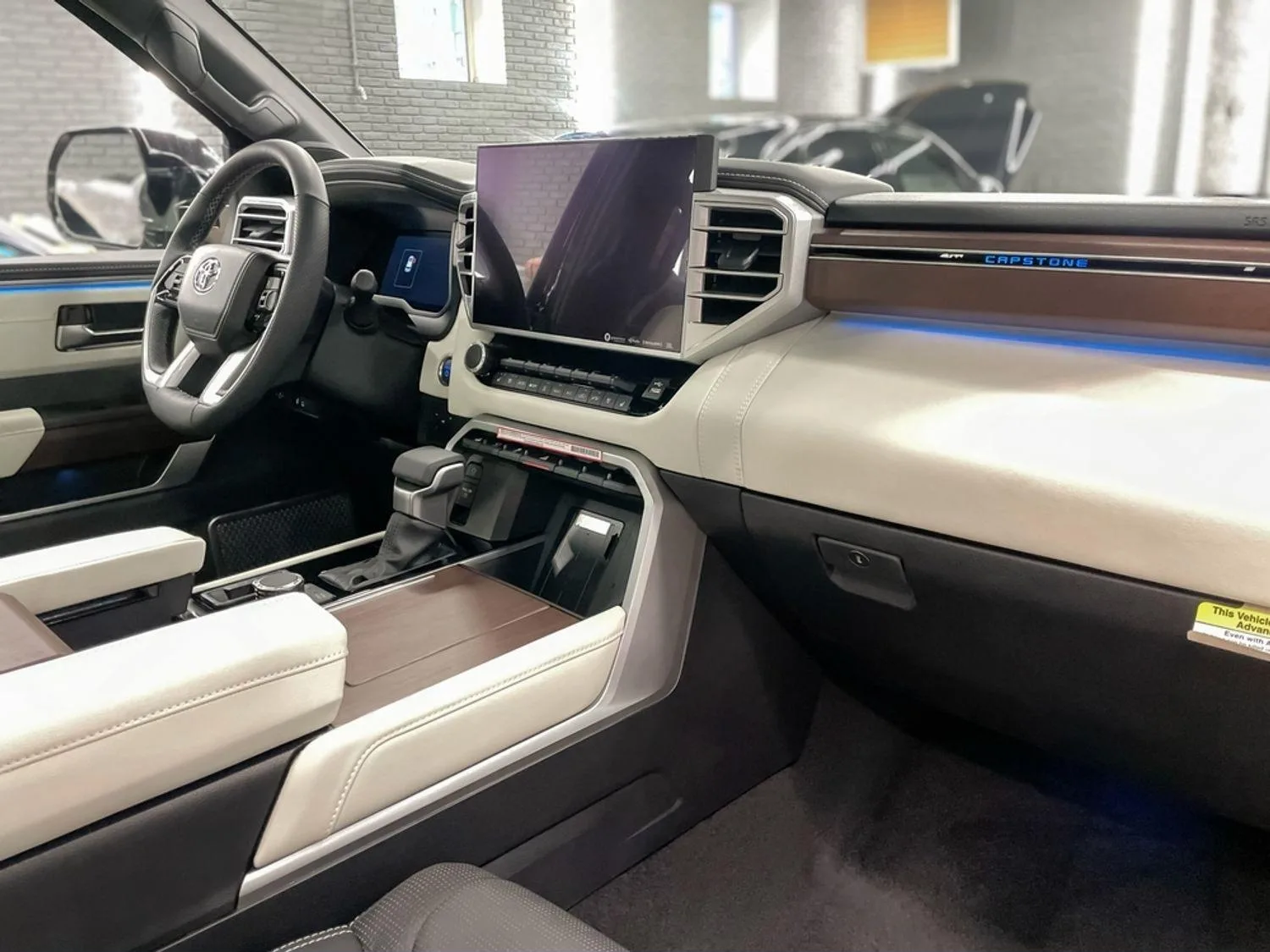
Modern features: digital display, sliding third row, surround-view camera
With the newest generation, you can expect to find many tech features now standard equipment across the lineup. There are five trim levels: SR5, Limited, Platinum, TRD Pro, and the Capstone.
Gen 3 has a 14-inch touchscreen infotainment system with a 12.3-inch digital dash. This system includes all the connectivity apps you need, plus device mounts for your phone or GPS system.
Toyota Safety Sense 2.5 with front and rear parking sensors, Rear Cross-Traffic Alert, and Blind Spot Monitoring are standard. In addition, a moonroof and heated seats are also standard. The power third-row seat, hands-free liftgate, and 120-Volt outlets in the cabin and cargo area are all part of the SR5 Premium package. The further up the trim level you go, the more luxury and convenience features you’ll find.
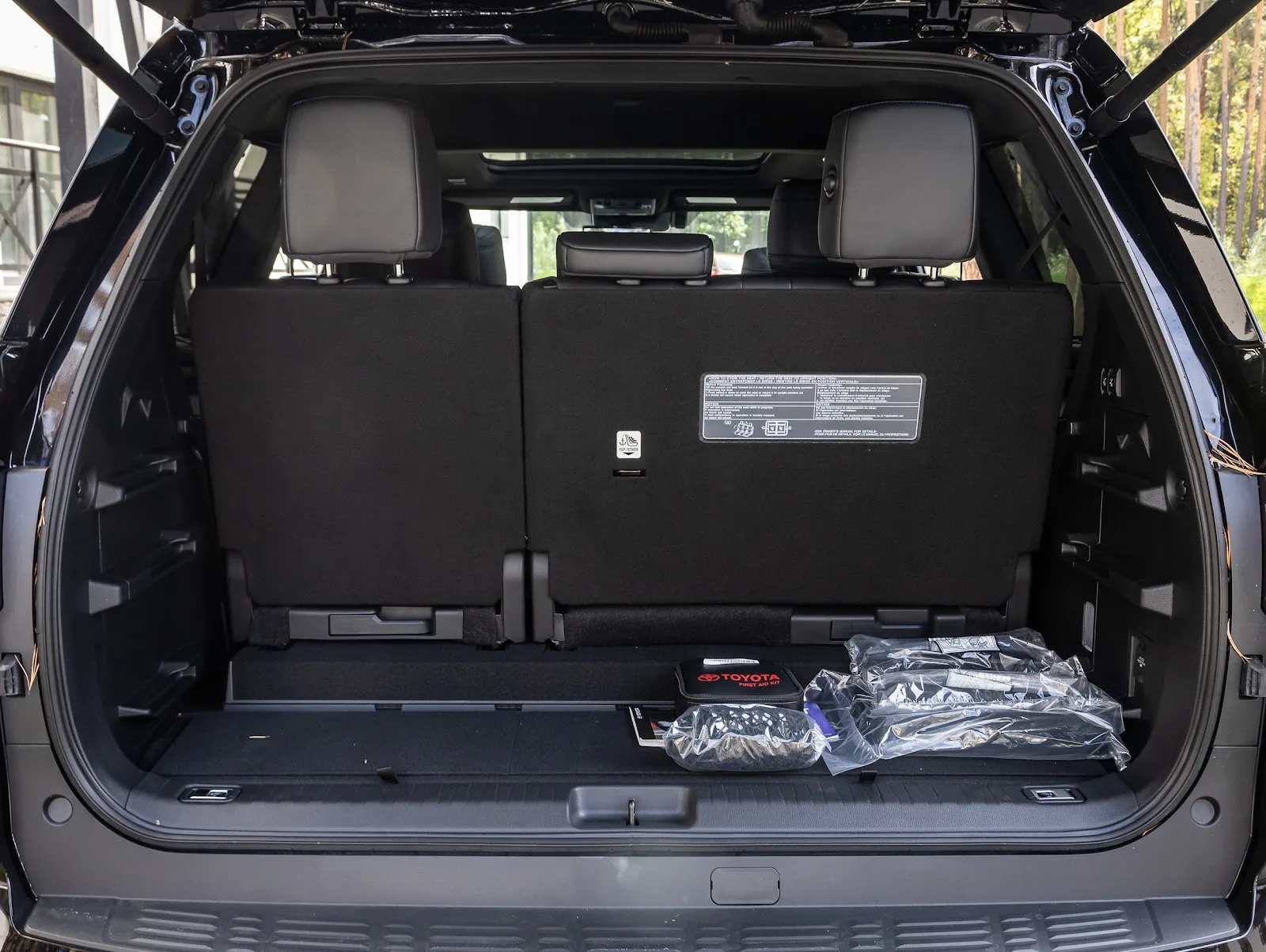
Less interior space vs. Gen 2
Yes, the batteries take away from the interior space in Gen 3 over Gen 2.
| Second Generation | Third Generation |
|---|---|
| 120.1 inches folded flat | 86.9 inches folded flat |
| 18.91 inches behind the 3rd row | 11.5 inches behind the 3rd row |
That’s a 33.2 cubic foot difference in folded-flat configuration. You can fit luggage, multiple suitcases, and maybe a kayak in the 120.1 cubic feet of space, while the Gen 3 space allows for several suitcases and travel bags. You’ll have to put your kayak on the roof for this generation. It’s still an impressive amount of room for passengers and cargo. Here is how the 2025 compares to other hybrid SUVs:
| Rank | SUV Model | Cargo Space (inches) |
|---|---|---|
| 1 | Toyota Grand Highlander | 97.5 inches |
| 2 | Ford Explorer Hybrid | 90.3 inches |
| 3 | Sequoia Hybrid | 86.9 inches |
| 4 | Toyota Highlander Hybrid | 84.3 inches |
| 5 | Hyundai Santa Fe Hybrid | 79.6 inches |
When you’re number three in a competition that includes two of your siblings, you can rest assured that you have more than adequate cargo space.
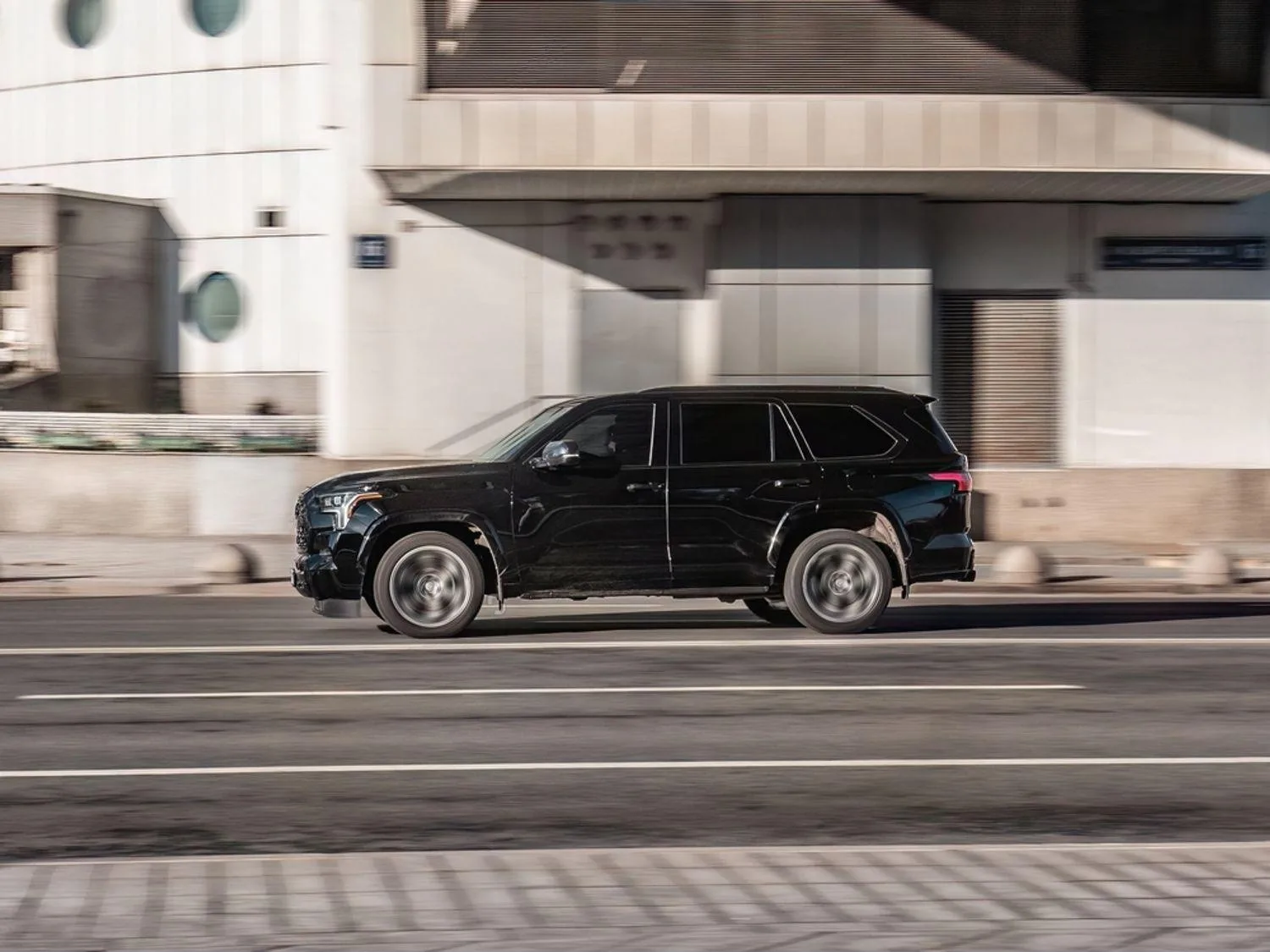
Years to Avoid When Buying a Used Toyota Sequoia: Problematic Model Years and Known Issues
Frame rust concerns weren’t exclusive to the Sequoia; Toyota has struggled with frame rust across its models. It’s really not exclusive to Toyota, either. Since frames are steel, if the vehicle is subject to road salt and ocean air salt, it rusts. Toyota recognized the issues and extended the warranties in some cases and recalled the vehicles in others.
Due to the frame design, there are some spots that collect moisture that allow for rust formation. When checking out a used Sequoia – especially in northern states or coastal areas – do a complete frame inspection. Don’t overlook the rear and the rails. If there is any damage to the frame, it may be compromised, so pass on that vehicle.
Frame rust concerns (2004–2010):
2004–2010: Rust-prone frames. Toyota extended warranties and even bought back some vehicles after investigations.
Oil Leaks, Excessive Fuel Consumption, and High Repair Costs
2008–2009: First years of Gen 2 had teething issues like brake booster failures and rear diff leaks.
An oil leak will contribute to excessive fuel consumption before leading to costly repairs. Check all of the gaskets and seals. According to one user on Reddit, his upper oil pan seal was leaking, and the cost of repair is almost 97% labor because the engine practically needs to be pulled to get to the seal.
While users thought this was expensive, the general consensus was that it was worth it to keep the Sequoia running since the author was ready to hit the 400,000 mile mark. His local Toyota dealership has a parts truck with the 4.7L powering it with almost 600,000 miles on it. There is no doubt that a properly maintained Toyota isn’t worth keeping.
Inspection Tips Before Purchase
As always, when buying a used vehicle, you need to do a thorough inspection. Here are some inspection tips:
- Body – check for rust, dents, scratches, and alignment. Make sure all of the body panels and doors are lined up.
- Tires – check for wear, bulges, cracks, and alignment issues.
- Windows and windshields – look for cracks, chips, and leaks.
- Lights – make sure all of the lights are working properly.
Under the Hood
- Fluids – check oil, transmission, and other fluids for proper levels and leaks, as well as discoloration.
- Belts and Hoses – inspect them for cracks, leaks, and condition.
- Engine – listen for unusual noises or a rough idle.
Undercarriage
- Leaks – look for drips or corrosion.
- Exhaust – check for rust and cracks.
- Suspension – look for damage or worn components.
Here are some more tips:
- Take a test drive and pay attention to braking, acceleration, and shifting.
- Do a vehicle history using the VIN.
- Have a trusted mechanic inspect it.
- Check for recalls.
- Don’t forget to check the ball joints and airbags for any problems.
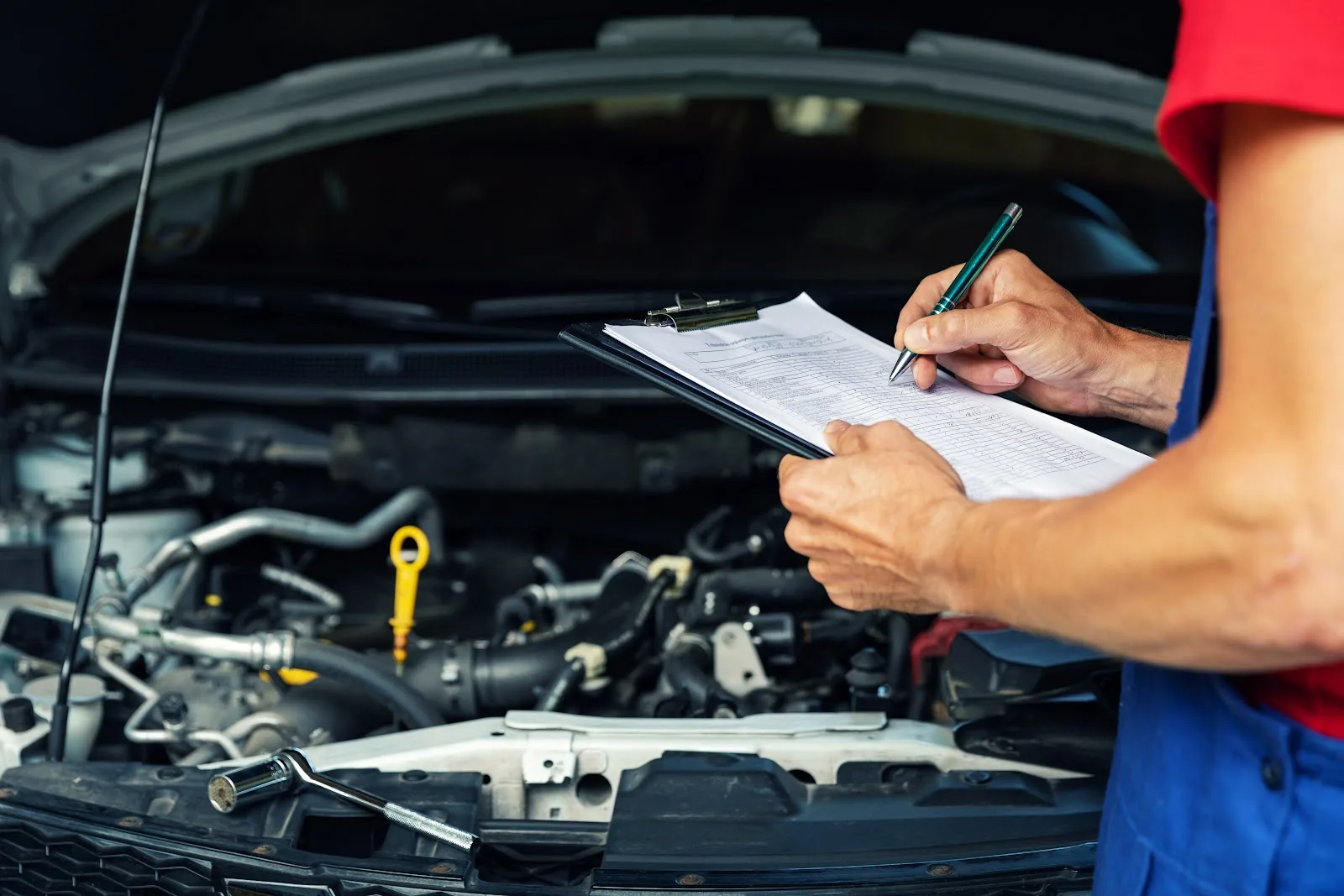
Is the Used Toyota Sequoia Reliable?: Longevity, Maintenance, and Real-World Owner Experience
There are many stories around the internet, like the one from the Reddit forum that discusses the longevity of any Toyota.
For instance, there is a 400,000-mile 2002 Sequoia that the Car Wizard inspected, highlighting the amazing condition this SUV is in. The original owner, Lynn Eisberg of Portola Valley, CA said it broke her heart to sell it at 300,000 miles, but her husband felt it was time.
Is the Used Toyota Sequoia Reliable?
According to CoPilotSearch.com, the Sequoia is capable of miles and years of adventure, so don’t let the odometer scare you. As long as the vehicle is properly maintained, you can get many more miles from it.
How Long Do They Last?
Research indicates that the Sequoia can last for years and miles.
What Usually Breaks?
Common problems with the Sequoia include worn brake pads and rotors, exhaust manifold cracks, and lower ball joint issues. The brake pads have a 30,000 mile lifespan as an average based on normal driving, and the rotors may need replacement between 30,000 and 80,000 miles. Brake lines in rust-prone areas can corrode and leak.
Other common issues include:
- Lower Ball Joints – there was a recall, so check your year and model to find out if yours was included
- Airbag System – defective sensors have been known to trigger the airbag light
High-mileage durability (200k–300k miles reported)
Toyota Cruisers & Trucks magazine featured a 2003 Toyota Sequoia SR5 4WD Premium with 300,000 miles on it. It was owned by a Virginia pastor who bought it brand new.
Common repairs and expected maintenance by generation
| Generation | Common Issues | Maintenance Notes |
|---|---|---|
| Gen 1 (2001–2007) | Rust, timing belt, suspension bushings | Replace timing belt every 90K miles |
| Gen 2 (2008–2022) | A/C actuators, rear diff, brake master cylinder | Regular fluid changes are key |
| Gen 3 (2023– ) | Still new, but watch for hybrid software bugs | Dealer-only service for some systems |
Toyota build quality and resale value over time
Resale Value?
Sequoias hold their value well—especially compared to rivals like the Chevy Tahoe or Ford Expedition. According to iSeeCars, Toyota is ranked among the top brands for long-term resale value source.
The Sequoia retains 60% of its original value after five years, which places it above average for large SUVs and hybrid SUVs. The average price of a 5-year-old model is $41,000, and CarEdge likes the 2022, 2024, and the 2021 models for their resale value.
Towing and Seating Capacity by Generation: How Much Can a Used Sequoia Tow, and How Many People Can It Fit?
All Sequoias are built for moving people and cargo, so you can expect a lot of legroom, as well as cargo space, which we’ve already discussed earlier. Here are the towing capacities by generation:
| Generation | Max Towing Capacity |
|---|---|
| Gen 1 | 6,500 lbs |
| Gen 2 | 7,400 lbs |
| Gen 3 | 9,520 lbs |
Seating: up to 8 passengers (varies by trim)
- All Generations: Available in 7- or 8-passenger layouts.
- Second-Row Options: Bench or captain’s chairs (Limited and Platinum trims often get captains).
- Utility Extras: Fold-flat third rows, power rear glass, sliding second-row seats (Gen 3).
Utility features: fold-flat rows, second-row sliders, air suspension
For those who use their Sequoia for escape, Toyota lets you configure the ride the way you want. From flat fold seats to adjustable air ride capabilities, the Sequoia is a good travel companion.
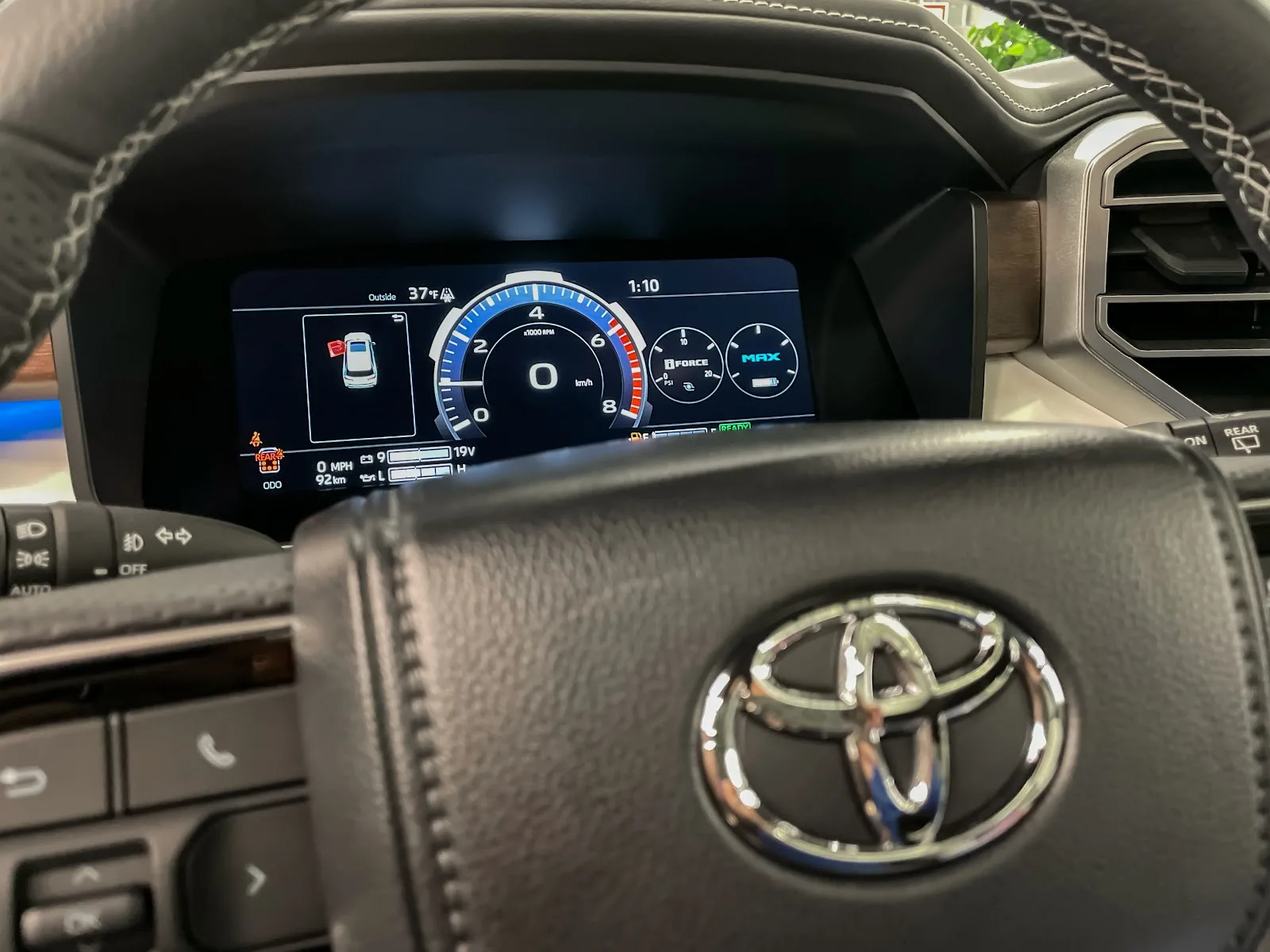
Fuel Economy of Used Toyota Sequoias: MPG Ratings by Year and Drivetrain Type
| Generation | Drivetrain | MPG (Est. Combined) |
|---|---|---|
| Gen 1 | 2WD / 4WD | 14–15 mpg |
| Gen 2 | 2WD / 4WD | 13–15 mpg |
| Gen 3 | Hybrid RWD / 4WD | 20–22 mpg |
Gen 3: up to 22 mpg (RWD), Gen 2: 15 mpg average
With the introduction of the hybrid in the third generation, it is natural that we would see better fuel efficiency. This is true across the drivetrain set up, and it is considerably more than the fuel efficiency in the second generation.
Hybrid benefits vs. traditional V8
The Gen 3 hybrid delivers almost double the mileage of older V8s, with more torque and towing to boot. But it’ll cost more upfront and may come with higher maintenance bills down the line (battery pack replacements aren’t cheap).
Real-world fuel economy expectations
According to fuelly.com, real world isn’t always the same as brochure world, and while the mileage isn’t as good as what’s on paper, most Sequoia owners in a limited study got around 16 miles a gallon.
Choosing the Right Used Toyota Sequoia for Your Needs
It’s not hard to find a Sequoia that would look perfect in your driveway. With a number of models and trim package options, you can find one that suits your lifestyle and your travel needs.
When you choose to buy a used Sequoia from the experts at Flex, they can help you find the right SUV for your lifestyle. From Sequoias to Tundras to Land Cruisers and their own Renoca Series, you’re talking to the right people.
Who Should Buy Which Toyota Sequoia Generation?
| Buyer Type | Best Fit | Why |
|---|---|---|
| Budget Buyer | 2010–2013 | Reliable, cheap, basic tech |
| Big Family | 2014–2018 | Spacious, safer, decent price |
| Tech Lover | 2020+ | CarPlay, digital upgrades |
| Towing Champ | 2023+ | Best towing, hybrid power |
| Off-Road Adventurer | 2016–2021 TRD Sport or Pro | Skid plates, Bilstein shocks |
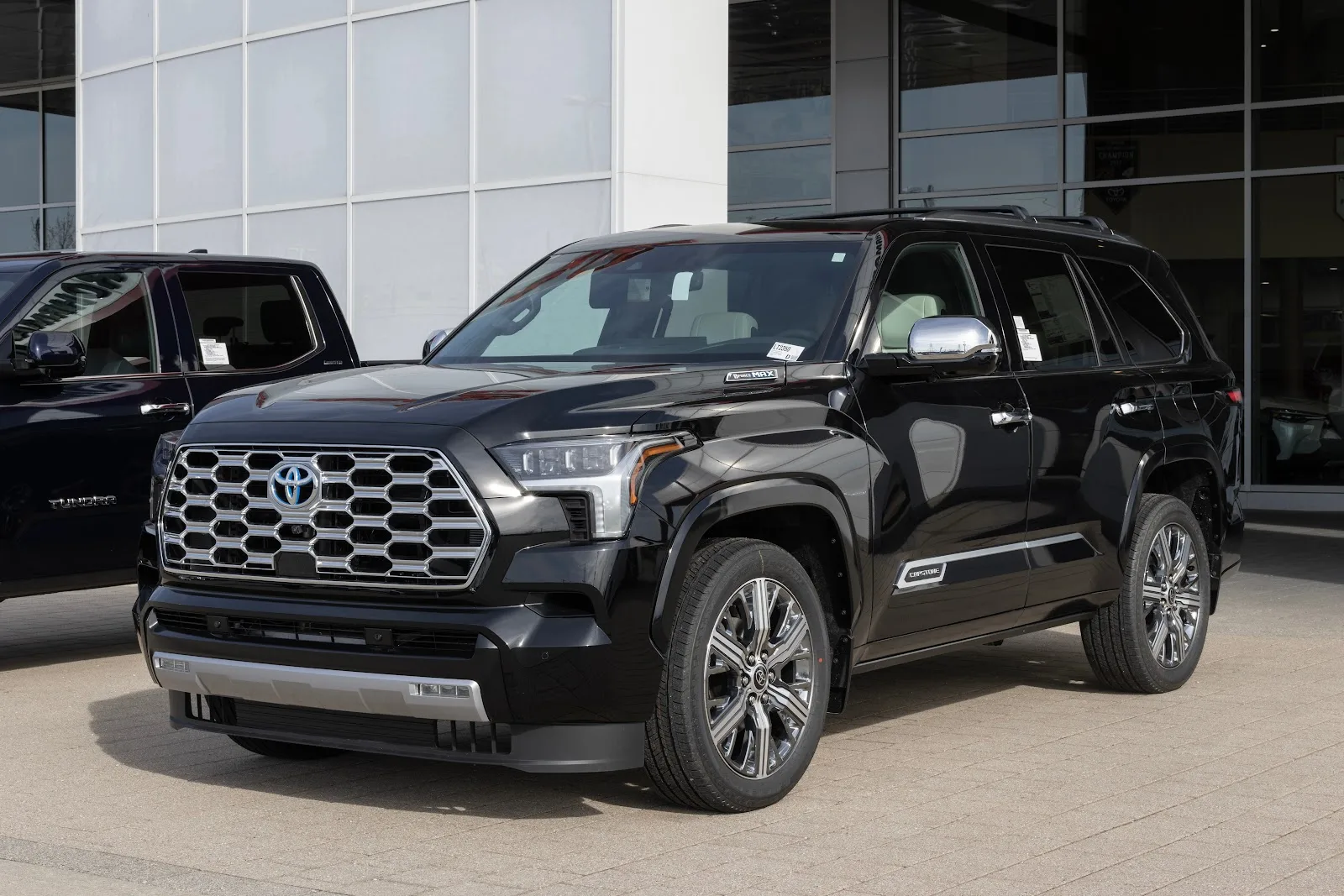
Pre-Purchase Checklist: What To Inspect, What To Ask
When you’re shopping for a used Sequoia, be sure to ask questions about the vehicle, its condition, its history, and most of all, how it was driven. Here are some things to check before you sign any paperwork:
Pre-Purchase Checklist
- Check the frame for rust
- Scan for engine codes
- Inspect tires, brakes, and suspension
- Verify maintenance history (timing belt, fluids)
- Test 4WD system
A used Toyota Sequoia is one of the smartest full-size SUV buys you can make. Whether you go old-school V8 or new-school hybrid, you’re getting legendary Toyota reliability, monster towing, and room for everyone.
Just remember: newer gets you better safety, older saves you cash. And if you find a rust-free 2018 with full service records? Snag it.
If you need any help or have any questions about a Sequoia you’re considering, then ask the experts at Flex Motors. They have over 60 years of Toyota experience and are the number one Land Cruiser dealership in Japan. The San Diego team knows Sequoias, as well as any other Toyota, so contact them for more information.


